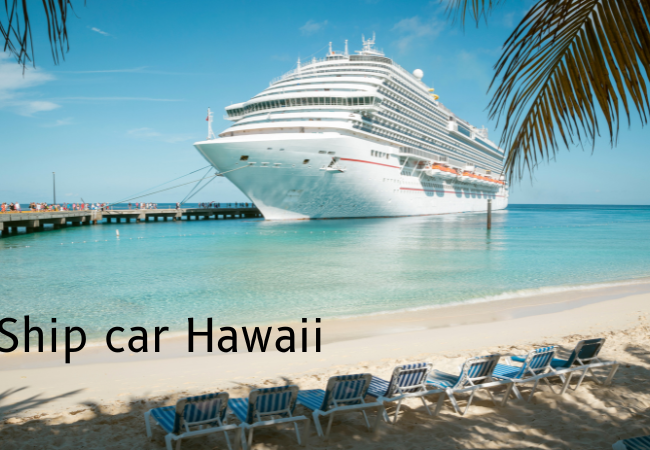Ship Car Hawaii: A Comprehensive Guide

Shipping a car to Hawaii is a significant decision that requires careful planning and consideration. Whether you’re relocating to the islands or need your vehicle transported for a temporary stay, understanding the process is crucial. This guide covers everything from the basics of shipping a car to Hawaii, preparing your vehicle, choosing the right shipping method, and dealing with potential issues.
Understanding the Basics
Why Ship a Car to Hawaii?
Ship Car Hawaii is often more practical than buying a new one locally. The limited availability and higher costs of vehicles on the islands make shipping a viable option. Additionally, having your familiar car can provide comfort and convenience in a new environment.
Benefits of Shipping vs. Buying Locally
Shipping your car can save money compared to purchasing a new or used car in Hawaii. The selection on the islands is limited, and prices are generally higher due to import costs. By shipping your car, you also avoid the hassle of selling your old vehicle and finding a new one that meets your needs.
Preparing Your Car for Shipment
Cleaning and Inspection
Before shipping your car, it’s essential to clean it thoroughly, both inside and out. This makes it easier to inspect for any pre-existing damage and ensures that the car is in good condition for the journey. Take detailed photos of the car from all angles for documentation.
Removing Personal Items
Ensure all personal items are removed from the car. Shipping companies usually do not cover personal belongings in their insurance policies, and loose items can cause damage during transit.
Checking for Leaks
Inspect your vehicle for any fluid leaks and address them before shipping. Leaks can cause damage to other vehicles in the container or ship and may result in additional charges.
Choosing a Shipping Method
Container Shipping
Container shipping involves placing your car in a large container, which provides additional protection from the elements and potential damage. This method is more expensive but offers greater security and is ideal for high-value vehicles.
Roll-on/Roll-off (RoRo) Shipping
RoRo shipping involves driving the car onto the ship, securing it in place, and then driving it off upon arrival. This method is generally cheaper but offers less protection compared to container shipping.
Pros and Cons of Each Method
Container shipping is more secure and offers better protection but is costlier and may have longer transit times. RoRo shipping is more affordable and faster but exposes the car to potential damage from weather and handling.
Finding a Reliable Shipping Company
Researching Companies
Start by researching various shipping companies that specialize in transporting cars to Hawaii. Look for those with experience and positive reviews from previous customers.
Reading Reviews
Customer reviews provide valuable insights into a company’s reliability, service quality, and customer satisfaction. Check multiple sources, including independent review sites and social media.
Asking for Recommendations
Seek recommendations from friends, family, or colleagues who have shipped a car to Hawaii. Personal experiences can help you choose a trustworthy company.
Costs Involved in Shipping a Car to Hawaii
Breakdown of Costs
The cost of shipping a car to Hawaii includes several factors such as the shipping method, distance, vehicle size, and additional services like insurance. Typically, prices range from $1,000 to $1,500 for RoRo and $2,000 to $3,000 for container shipping.
Factors Affecting Shipping Costs
Factors like the type of vehicle, shipping method, pickup and delivery locations, and seasonal demand can influence the overall cost. It’s essential to get quotes from multiple companies to find the best deal.
Cost-Saving Tips
Booking in advance, being flexible with shipping dates, and choosing a port-to-port service instead of door-to-door can help reduce costs. Additionally, comparing quotes from different companies ensures you get the best price.
Required Documentation
Necessary Paperwork
Shipping a car to Hawaii requires specific documents, including the vehicle’s title, registration, and proof of ownership. Ensure all paperwork is in order to avoid delays.
Vehicle Title and Registration
The vehicle title and current registration must be provided to the shipping company. If there’s a lien on the vehicle, you’ll need permission from the lienholder to ship it.
Proof of Ownership
Proof of ownership is essential to verify that the car being shipped belongs to you. This typically includes the title, registration, and a bill of sale if applicable.
Insurance and Liability
Understanding Insurance Coverage
Shipping companies usually provide basic insurance coverage, but it’s crucial to understand what is covered. Review the policy to know the extent of protection offered.
Additional Insurance Options
Consider purchasing additional insurance for extra peace of mind. This can cover potential damages not included in the standard coverage.
Liability of Shipping Companies
Shipping companies have limited liability for damages. It’s essential to document the car’s condition before shipping and immediately report any issues upon delivery.
Scheduling the Shipment
Timing and Planning
Plan the shipment well in advance to secure the best rates and ensure availability. Peak seasons and holidays may affect scheduling and costs.
Booking in Advance
Booking your shipment several weeks or even months ahead can provide better rates and more options for shipping dates.
Flexibility in Scheduling
Being flexible with your shipping dates can help you find better deals and avoid peak season surcharges.
Customs and Regulations
Understanding Customs Rules
Familiarize yourself with Hawaii’s customs regulations for vehicle imports. This includes understanding the requirements for emissions and safety standards.
State Regulations
Hawaii has specific regulations regarding vehicle emissions and modifications. Ensure your car complies with these standards before shipping.
Emissions Standards
Vehicles shipped to Hawaii must meet certain emissions standards. Check with the Department of Transportation for the latest requirements.
Shipping Duration
Typical Transit Times
The typical transit time for shipping a car to Hawaii ranges from 7 to 21 days, depending on the shipping method and origin.
Factors Influencing Duration
Factors such as weather conditions, port congestion, and shipping method can affect the transit time. Plan accordingly to avoid delays.
Tracking Your Shipment
Most shipping companies provide tracking services, allowing you to monitor your car’s journey and stay informed about its progress.
Receiving Your Car in Hawaii
Inspection Upon Arrival
Upon arrival, inspect your car for any damage. Use the photos taken before shipping to compare and document any new issues.
Picking Up the Car
Coordinate with the shipping company for the pickup. Be prepared with necessary identification and documentation.
What to Do if There’s Damage
If you notice any damage, report it immediately to the shipping company and file a claim. Having detailed pre-shipment photos will support your case.
Dealing with Potential Issues
Common Problems
Common issues include delays, minor damages, and miscommunication. Being prepared and understanding the process helps mitigate these problems.
Solutions and Support
Work closely with the shipping company to resolve any issues. Good communication and thorough documentation are key.
How to File a Claim
If there’s damage, follow the shipping company’s claim process. Provide all necessary documentation and evidence to support your claim.
Environmental Considerations
Impact on the Environment
Shipping a car has environmental impacts, including carbon emissions. Consider eco-friendly shipping options when available.
Eco-Friendly Shipping Options
Some companies offer green shipping options, such as carbon offset programs or more fuel-efficient shipping methods.
Reducing Carbon Footprint
Reduce your carbon footprint by consolidating shipments and choosing environmentally friendly practices during the shipping process.
Case Studies and Testimonials
Real-Life Experiences
Reading case studies and testimonials from others who have shipped cars to Hawaii can provide valuable insights and tips.
Success Stories
Success stories highlight the positive experiences and lessons learned from previous customers, helping you make informed decisions.



